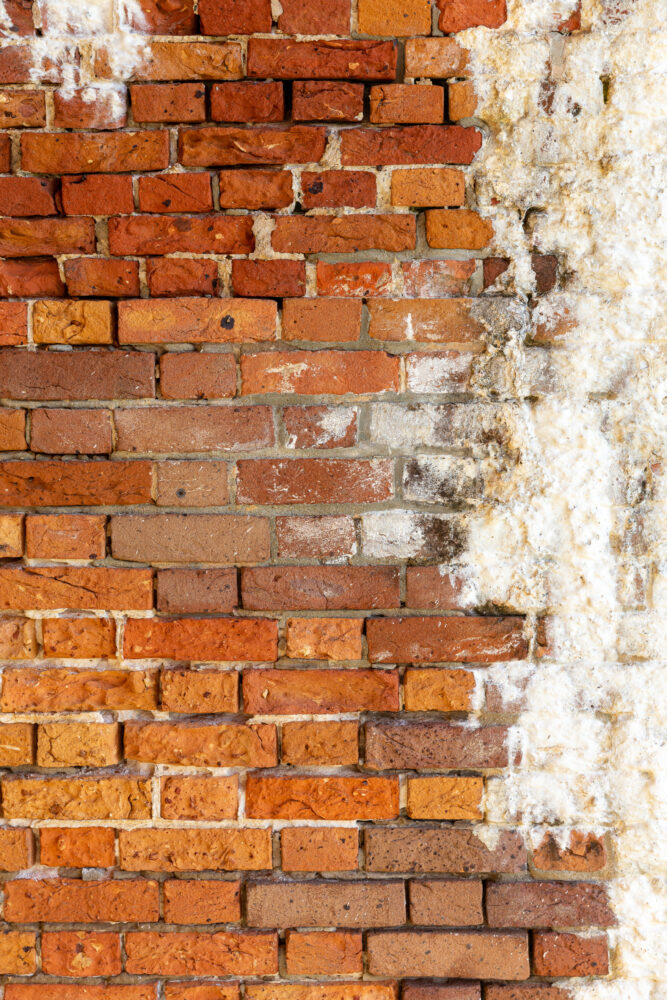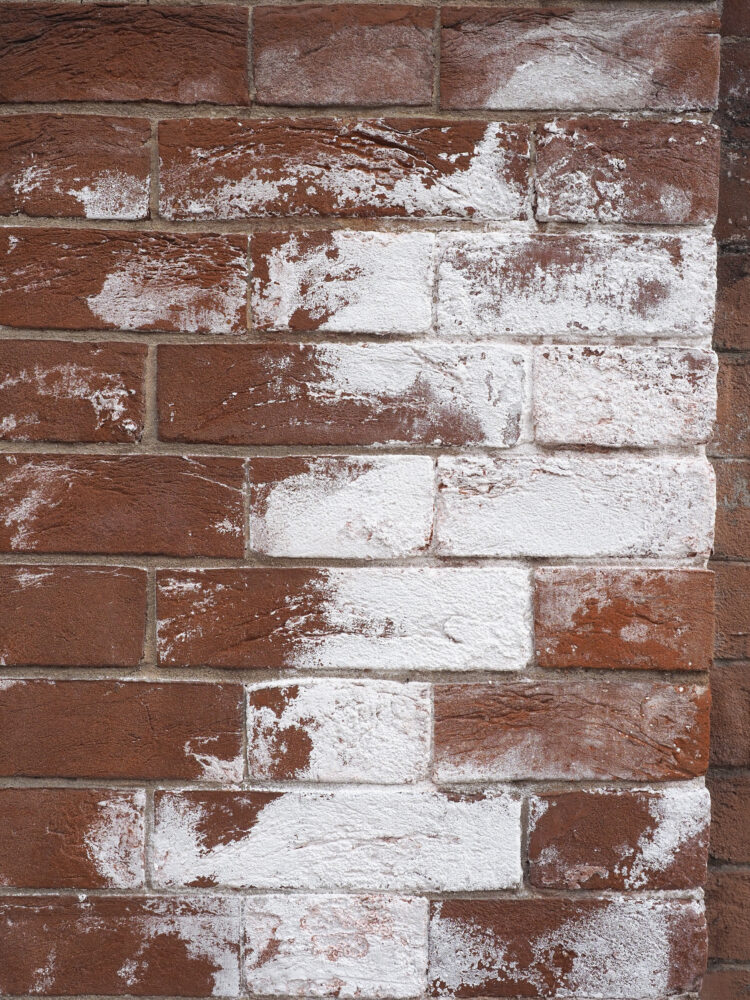Our Services
Efflorescence Removal in Kingwood, TX
Efflorescence is an accumulation of minerals and salts on masonry surfaces, such as brick, cement, and sometimes stone.
How Efflorescence Forms
The earth contains natural salts that are present in the raw materials that make up masonry products, such as concrete, asphalt and stucco. These salts remain trapped within masonry in solid form until they are dissolved into water, which usually makes its way into the material through small pores. Water can originate from rain, sprinklers, household leaks, or any number of other places. Cold, dry air will draw this liquid back out of the material where it evaporates, depositing the salt as a white crystalline growth on the surface. Efflorescence typically forms during cold, dry weather shortly after it has rained and moisture has entered the masonry. It can occur year-round, but it is most likely to form during the winter due to low temperatures.

Identifying Efflorescence
As with mold, the appearance of efflorescence varies greatly. It can be powdery, it can have sharp edges and be easy to spot, or it can have indistinct edges. It can cover a large area as a fine dust, or form large individual crystals. Its appearance depends partly on the type of salt from which it is composed, but humidity also plays a role in this determination. In exceptionally dry climates, water can evaporate before it even reaches the surface, in which case the salt will accumulate unseen beneath the surface. In humid conditions like here in Texas, moisture may take a long time to evaporate, allowing the slow growth of “whispers” projecting from the surface.
We already know how to distinguish mold (pictured at right) from efflorescence, but it is possible for homeowners to confuse the two.
The expense of a mold test can be avoided if the substance in question can be identified as efflorescence. Here are a few tips that we can offer our clients so that they understand the differences:
- Pinched between the fingers, efflorescence will turn into a powder, while mold will not.
- Efflorescence forms on inorganic building materials, while mold forms on organic substances. However, it is possible for mold to consume dirt on brick or cement.
- Efflorescence will dissolve in water, while mold will not.
- Efflorescence is almost always white, yellow or brown, while mold can be any color imaginable. If the substance in question is purple, pink or black, it is not efflorescence.
Aside from mold, the following conditions can result from excess moisture in a residence:
- fungi that rot wood;
- water damage to sheetrock;
- reduced effectiveness of insulation.
An exception can be made during the first few years of a building’s construction when efflorescence will appear as a result of moisture locked within the masonry in a process called “new building bloom.” This moisture comes from water added during the manufacturing or mixing process that will undoubtedly contribute to efflorescence. This type of efflorescence will appear all over the masonry material and will continue to accumulate until the initial water supply is exhausted, which can take up to a year. Efflorescence that appears locally and after the “new building bloom” is over is a symptom of excess moisture that can be problematic. The source of this moisture should be determined and corrected.
Prevention And Efflorescence Removal
- An impregnating hydrophobic sealant can be applied to a surface to prevent the intrusion of water. It will also prevent water from traveling to the surface from within. In cold climates, this sealant can cause material to break during freeze/thaw cycles.
- During home construction, bricks left out overnight should be kept on pallets and be covered. Moisture from damp soil and rain can be absorbed into the brick.

Efflorescence Cleaning
- We are providing this as informative information only. We strongly advise hiring us, or another professional to perform the removal of efflorescence due to the chemicals that may be needed in the removal process.
- Pressurized water can sometimes be used to remove or dissolve efflorescence. Hot water pressure washing will do the trick on a lot of cases.
- An acid, such as diluted muriatic acid, can be used to dissolve efflorescence. Water should be applied first so that the acid does not discolor the brick itself. Following application, baking soda can be used to neutralize the acid and prevent any additional damage to the masonry. Muriatic acid is toxic, and contact with skin or eyes should be avoided.
- A strong brush can be used.
Note: The use of water to remove efflorescence may result in the re-absorption of crystals into the host material, from which they may later reappear as more efflorescence. It is advisable that if water is used in the removal process that it is dried off very quickly.
In summary, efflorescence is a harmless yet unsightly accumulation of salts on masonry surfaces. Its presence indicates excess water, a condition that can damage interiors and encourage the growth of mold. We know how to remove efflorescence from surfaces, and we like to educate our clients about its identification and significance. We have the know how and experience in removing efflorescence both with and without using pressure washing techniques. Call us today for a free estimate on removing this nasty residue from your home or office.
